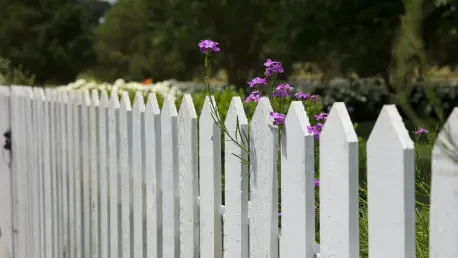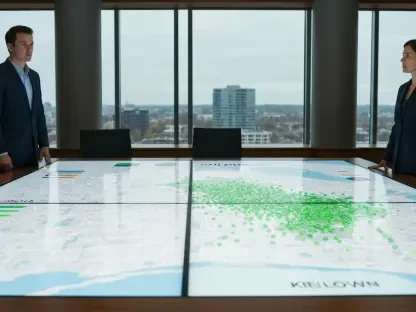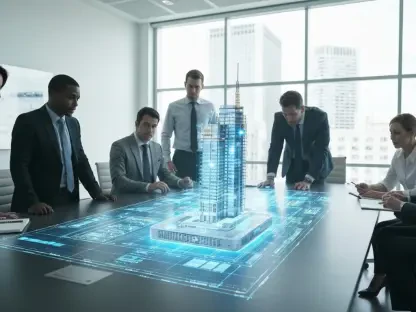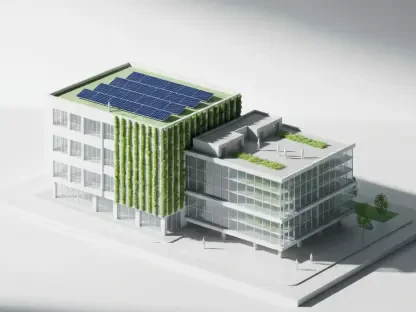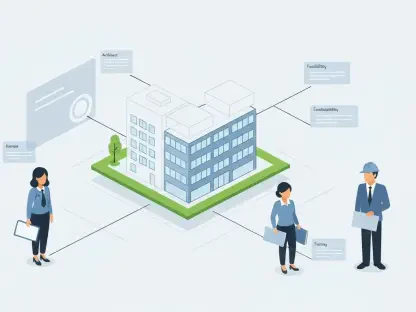The increasing demand for outdoor privacy, coupled with the desire for aesthetic enhancement, is reshaping fence design. Homeowners often find themselves grappling with privacy issues, especially in properties that bear the design choices of previous occupants. This challenge is propelling significant changes in the way fences are perceived and utilized. In modern landscapes, fences are evolving to address these privacy concerns while simultaneously enhancing the visual appeal of outdoor spaces. As yards and gardens become more integral to home life, the focus on blending functionality with design becomes essential. This article explores the ways in which fences are transforming from purely utilitarian structures to critical components of landscape architecture, reflecting broader trends in outdoor living spaces.
The Shift Towards Landscape Integration
In recent years, fences have undergone a transformation, now serving as more than just property dividers or simple enclosures for children and pets. They are increasingly viewed as essential elements of landscape design, contributing to the overall aesthetics of a home’s outdoor area. This shift marks a departure from the traditional approach where fences were often hidden or downplayed. Landscape architect Cory Morris notes this transition towards a design philosophy that prioritizes visual harmony and integration with the natural environment. The current trend emphasizes the seamless incorporation of fences into the landscape, ensuring they complement rather than detract from the surroundings. This change underscores the growing understanding that outdoor environments should reflect the same design principles as indoor spaces.
The push for integration with nature has led to innovative approaches in fence design, where materials and structures are chosen to blend with the environment. This approach not only enhances the visual appeal but also creates a harmonious relationship between built elements and nature. Fences are now seen as an opportunity to express personal style and complement the home’s architectural features. This trend aligns with broader movements in design that stress connectivity and continuity between indoor and outdoor living spaces. As such, the modern fence is not just a boundary but a statement piece that contributes to the overall narrative of a property’s design. This evolution reflects a deeper appreciation for cohesive and comprehensive design that respects and enhances the natural landscape.
Materials and Styles Revolutionizing Fence Design
The evolution of fence design is heavily influenced by the materials and styles that are gaining popularity among homeowners. A significant trend involves the use of bold colors to reflect personalized and design-forward approaches to outdoor spaces. Colors such as deep blues, rich greens, and bold neutrals are stepping into the spotlight, moving away from the traditional wood tones common in previous fence designs. Kym Nosbisch from Feeney Inc. highlights this shift, noting how high-gloss finishes and moodier hues are capturing the imagination of those seeking to bring a sense of individuality and modernity to their outdoor areas. These color choices reflect a broader trend towards integrating interior design principles, creating a seamless transition between indoor and outdoor living areas.
In addition to bold color choices, the variety of materials now available for fencing is expanding the possibilities for customization and innovation in design. Homeowners are increasingly drawn to materials that offer both durability and aesthetic appeal, allowing them to create fences that are not only functional but also visually striking. This move towards design-forward choices is indicative of a larger movement in home design that places emphasis on personalization and style, allowing homeowners to redefine their outdoor spaces. These evolving preferences are driven by a desire to create spaces that reflect personal taste while also addressing practical needs, such as privacy and security. By choosing materials and styles that align with their vision, homeowners are transforming their outdoor environments into extensions of their homes.
Innovative Lighting and Technology Integration
The incorporation of lighting and technology into fence design represents a significant advancement in how fences are utilized in outdoor spaces. Integrated lighting solutions are becoming increasingly popular, adding both ambiance and functionality to fences and railings. Kym Nosbisch emphasizes the rising demand for these lighting features, which can transform fences into essential components for outdoor events and evening gatherings. By enhancing the visual and practical appeal of these structures, integrated lighting elevates the overall outdoor experience, creating an environment that is both inviting and functional. This focus on lighting reflects a broader trend towards enhancing the usability and enjoyment of outdoor spaces, making them suitable for various activities throughout the day and night.
Technological advancements have also introduced automation and smart home integration into fence designs, offering new levels of convenience and security for homeowners. The use of motorized gates, keypads, and security cameras that can be operated remotely via smart devices exemplifies the intersection of technology and traditional home elements. This integration provides homeowners with greater control over their property boundaries, enhancing both security and ease of use. Such advancements are particularly appealing to those looking to maximize the functionality of their outdoor spaces while maintaining a modern and stylish aesthetic. As technology continues to evolve, its application in outdoor spaces like fencing is likely to expand, further enhancing the capabilities and appeal of these essential structures.
Adaptable Privacy Solutions
With the growing demand for privacy and flexibility in outdoor spaces, privacy screens have emerged as a versatile solution for homeowners seeking customizable options. These screens offer a level of adaptability that traditional fencing cannot, allowing individuals to tailor their outdoor environments to meet specific needs and preferences. Michelle Hendricks from Deckorators highlights the appeal of these screens, which enable unique landscaping designs without the permanence or restrictions of conventional fences. Privacy screens cater to the modern desire for personalization, providing creative freedom in outdoor design that is not bound by the constraints of standard fencing. This adaptability is particularly beneficial for renters or those looking for temporary solutions that can evolve as their needs change.
The versatility of privacy screens makes them an attractive option for a range of applications, from creating intimate garden spaces to adding decorative elements to a yard. The ability to easily install, move, and configure these screens means they can be used in various settings, enhancing both the functionality and aesthetics of an outdoor area. This approach aligns with contemporary design trends that prioritize flexibility and customization, allowing homeowners to craft environments that reflect their unique personalities and lifestyles. As privacy continues to be a central consideration in outdoor design, the use of adaptable solutions like privacy screens will likely become more prevalent, offering new opportunities for creativity and innovation in landscape design.
Sustainable and Minimalistic Designs
Sustainability and minimalism have become key drivers in the evolution of fence design, with aluminum emerging as a favored material for its durability and maintenance-free qualities. Aluminum’s ability to be powder-coated in a variety of colors allows for extensive customization, making it a popular choice for those seeking a stylish yet practical fencing solution. This material is valued not only for its aesthetic flexibility but also its resistance to weathering and environmental impact, aligning with a growing consumer focus on sustainable home improvement options. The use of aluminum reflects the ongoing shift towards materials that offer both longevity and environmental responsibility, demonstrating the importance of sustainability in modern design considerations.
In line with the priority of sustainability, minimal railing designs have gained traction among homeowners who wish to preserve scenic views while maintaining safety and security. Glass and cable railing systems, for example, are preferred for their ability to provide unobstructed views, seamlessly integrating the indoor and outdoor environments without compromising on protection. This approach is particularly valued in locations with natural beauty, such as oceanfront or hillside properties, where maintaining visual continuity is crucial. These minimal designs not only enhance the aesthetic appeal but also contribute to an overall sense of openness and flow, harmonizing with the natural landscape. This trend highlights the emphasis on creating spaces that are both beautiful and functional, marking a significant evolution in the way fences are perceived and used in contemporary settings.
Natural Aesthetics and Popular Finishes
Fences have evolved significantly, serving as more than mere barriers or enclosures for kids and pets. Today, they are pivotal elements in landscape design, enhancing the aesthetics of a home’s outdoor space. This marks a shift from traditional views, where fences were often concealed or played down. Landscape architect Cory Morris highlights this move toward a design philosophy that emphasizes merging fences with natural surroundings. The current trend pushes for fences to blend seamlessly into landscapes, augmenting rather than diminishing their environment. This transformation shows an increased appreciation for outdoor areas reflecting the same design vigor as indoor spaces.
This drive for natural integration has spurred creative fence designs, with materials chosen to harmonize with nature. Such designs boost visual appeal and create a balanced relationship between built structures and the natural world. Fences now serve as expressions of personal style, complementing home architecture. This trend mirrors broader design movements advocating continuity between indoor and outdoor spaces, positioning modern fences as statement pieces that enhance a property’s design narrative, showcasing comprehensive design that honors the natural landscape.
